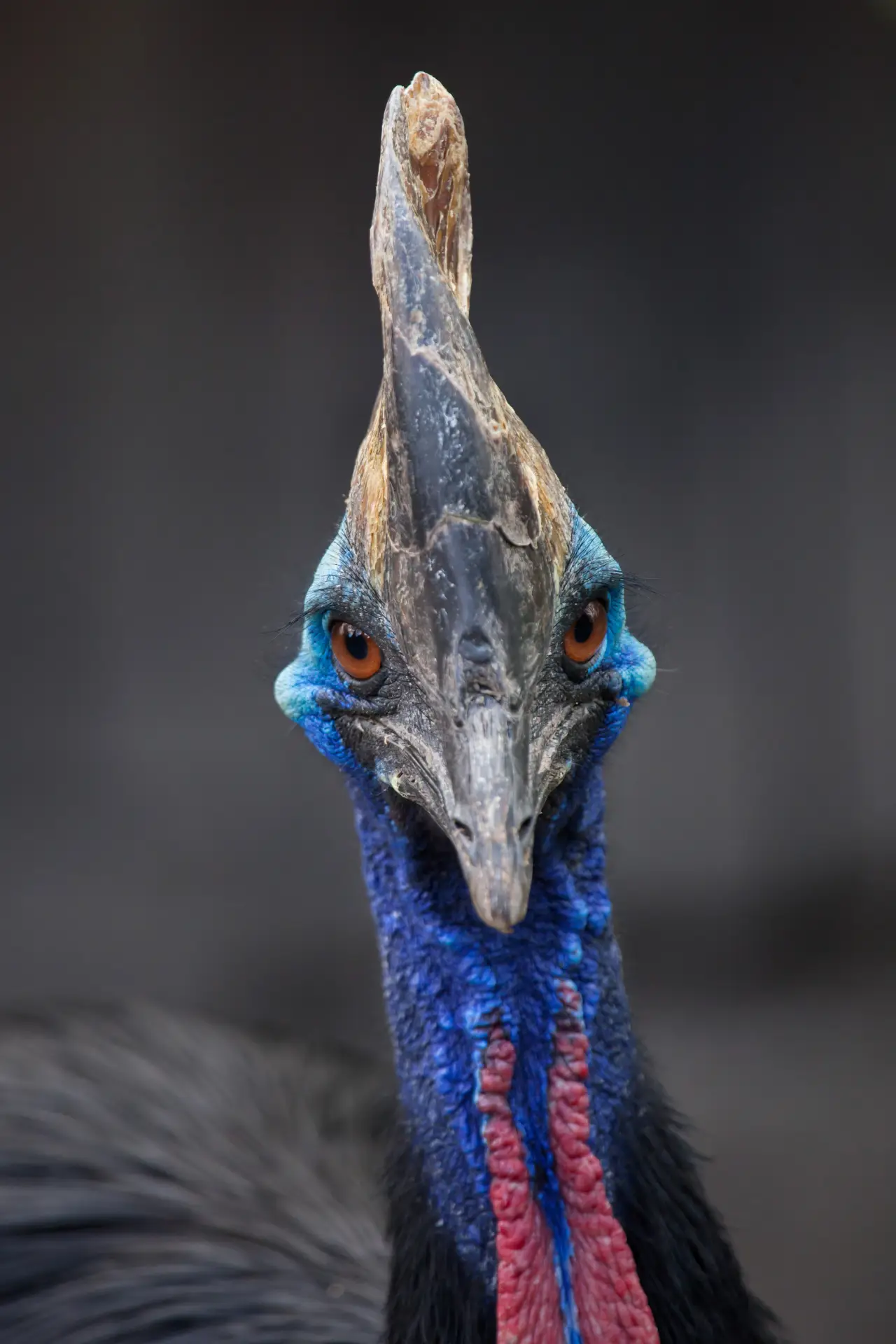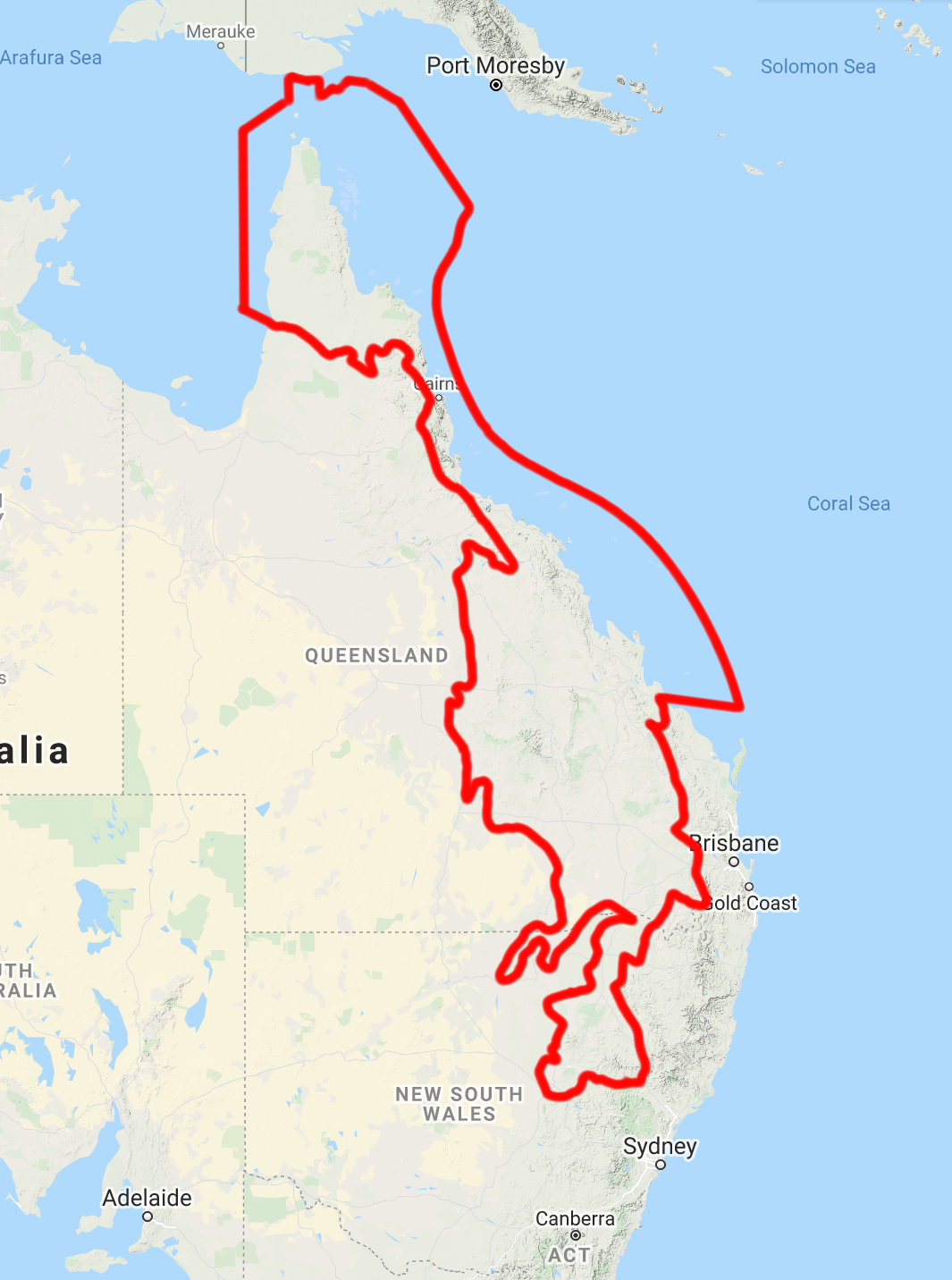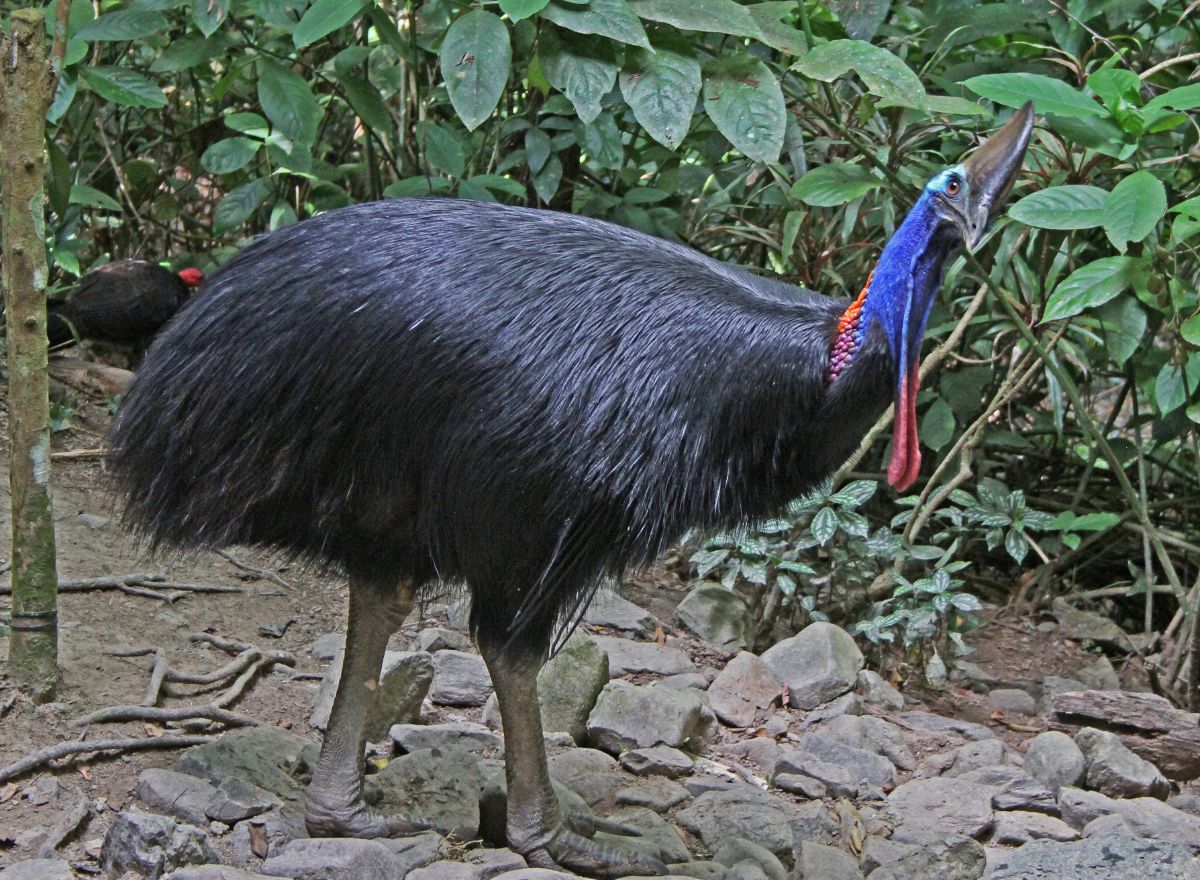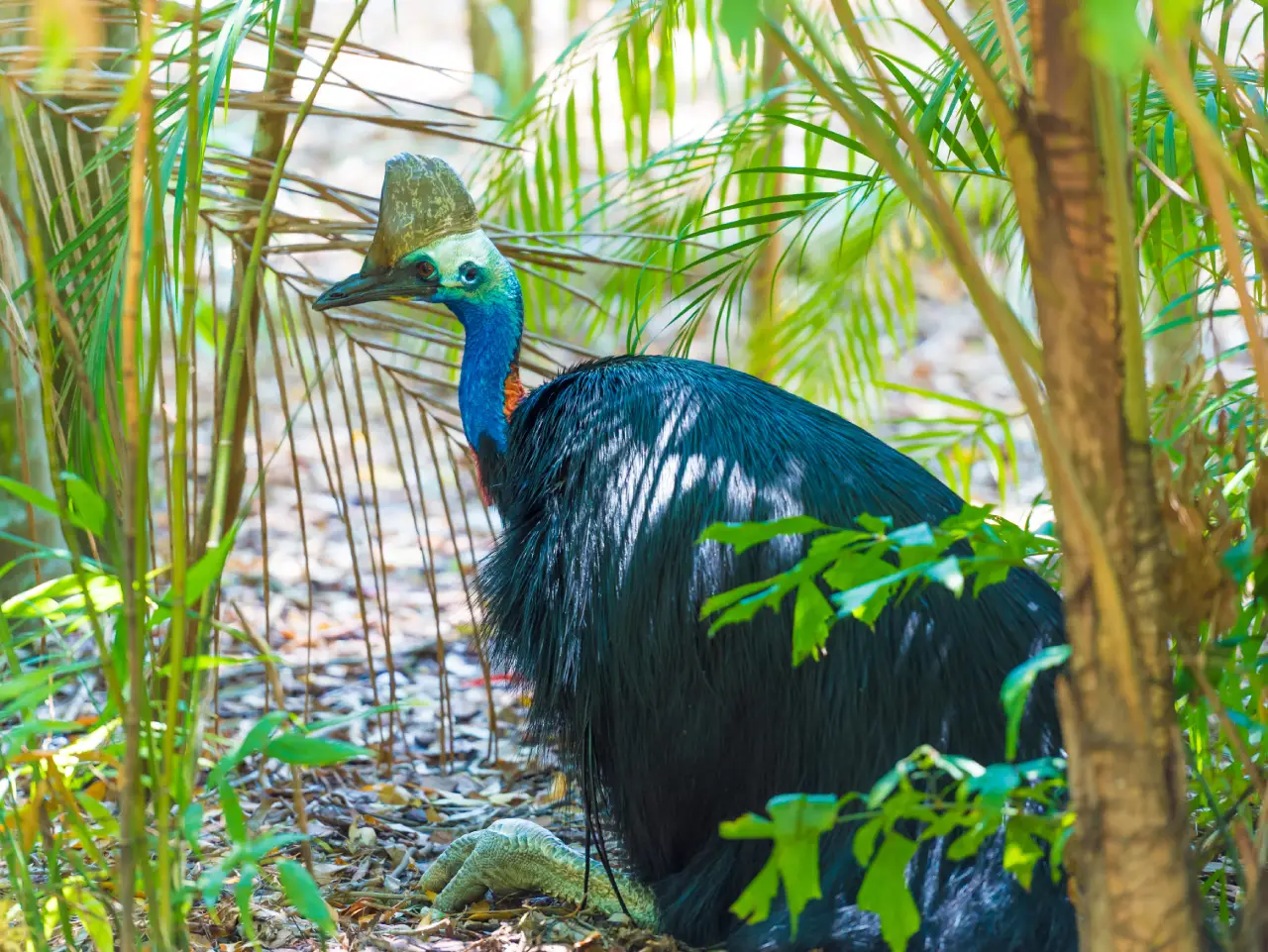Southern cassowary: 'living dinosaur' gardeners of the Daintree Rainforest
Our “Species of the Week” series highlights the flagship species of each of the 844 unique ecoregions contained within Earth’s bioregions.
Off the northeast coast of Australia lies one of the oldest tropical rainforests on our planet. Years of seclusion have kept many primitive species of plants and animals flourishing, some so ancient in appearance they seem to take us back to the time of the dinosaurs.

Standing over 1.9 meters (6 feet) tall and weighing up to 85 kilograms (187 pounds), the southern cassowary is a large, flightless bird. Bristly, black feathers cover its body up to a long neck that turns dark indigo and then suddenly, bright blue around its face, expressive brown eyes, and elongated, stony bill. Two red wattles hanging down around its throat give it a bit of a turkey feel, but it is the massive, horn-like casque sitting atop its head that makes this cassowary look positively prehistoric.

The southern cassowary is the flagship species of the Queensland Tropical Rainforests ecoregion, located in the Queensland Tropical Rainforests & Savannas bioregion (AU9).
Thick, three-toed feet with 4-inch talons and a dagger-like inner claw are also what give these birds the nickname of “living dinosaurs.” Bearing an uncanny resemblance to velociraptors, scientists say the birds are one of the most direct relatives to prehistoric creatures, still thriving after 80 million years. Their strong feet and legs allow them to jump up to five feet high and run up to 30 miles per hour. However, this power is used to mostly defend themselves or their nests and babies. Southern cassowaries are mostly solitary birds, but that all changes during the breeding season.
In late winter or early spring, thunderous calls are heard throughout the jungle. Adult females are larger than males and will mate with several partners, laying a clutch of three to four eggs with each. Southern cassowary eggs are a vivid green color, matching the ground nest the males have built out of the surrounding vegetation. Males are in charge of incubating the eggs and raising the young. Fathers teach juvenile cassowaries how to forage and they will become independent around nine months of age.

Image credit: Creative Commons, Joseph C Boone
These large birds are predominantly frugivorous and play an important role in dispersing forest seeds. Southern cassowaries eat the fruit that has fallen to the jungle floor and the seeds within that fruit are digested and spread throughout the region by the cassowary’s feces. This keeps the biodiversity of the forest blooming at a higher rate, a study found that the seeds of a rare Australian tree showed increased germination from 4% to 92% after passing through the digestive tract of a southern cassowary.

More than 80% of the coastal lowland rainforest in Australia has been cleared over the past century, so although currently not considered endangered, protecting the southern cassowary plays a vital role in preserving this ecosystem that has been around for hundreds of thousands of years.
Click the button below to discover how you can help protect the remaining rainforest home of this amazing creature!
Help Protect the Daintree Rainforest


